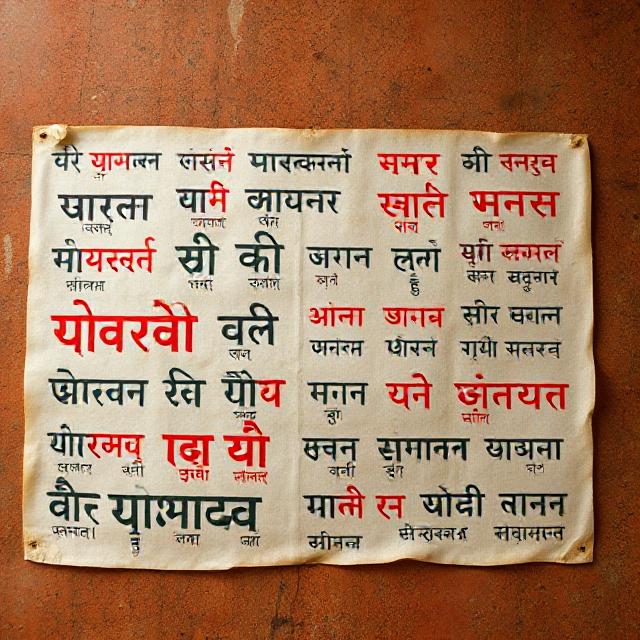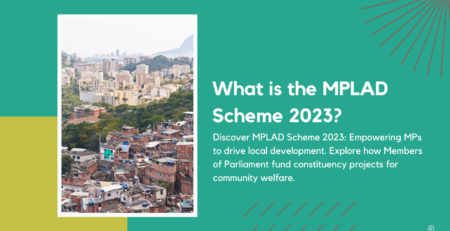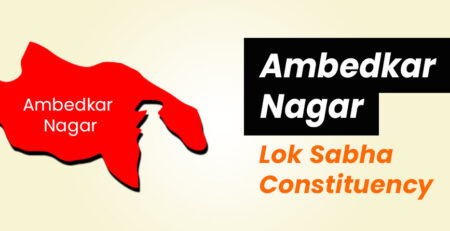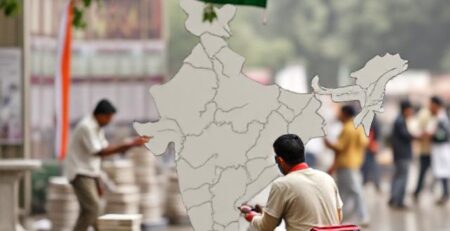Most Spoken Languages in India 2025: A Comprehensive Guide to India’s Linguistic Landscape
The Top 11 Most Spoken Languages in India 2025
1. Hindi – 540 Million Speakers
Hindi maintains its position as the most spoken language in India, with an estimated 540 million speakers in 2025. This represents approximately 40% of India’s total population. Hindi belongs to the Indo-Aryan branch and is a phonetic language where every character has a sound, with almost 53 crore speakers in states like U.P., Bihar, Uttarakhand, Rajasthan, M.P., Chhattisgarh, H.P., and Delhi.
Hindi serves as the official language of the Indian government alongside English and is widely understood across northern, central, and western India. The language has evolved significantly over the centuries, incorporating words from Sanskrit, Persian, Arabic, and English, making it accessible to speakers from diverse backgrounds.
The prevalence of Hindi in Bollywood cinema, national television, and digital media has further strengthened its position as India’s lingua franca. Major Hindi-speaking states include Uttar Pradesh, Bihar, Rajasthan, Madhya Pradesh, and Haryana, collectively forming what is known as the “Hindi Belt.”
2. Bengali – 100 Million Speakers
Bengali ranks as the second most spoken language in India with 100 million speakers. Primarily concentrated in West Bengal, Bengali also has significant speaker populations in Assam, Tripura, and parts of Jharkhand and Odisha. The language boasts a rich literary tradition, with Nobel laureate Rabindranath Tagore being one of its most celebrated contributors.
Bengali serves as the official language of West Bengal and is known for its cultural significance in literature, music, and cinema. The language has influenced Indian culture through its poetry, songs, and intellectual traditions. Kolkata, the cultural capital of Bengal, remains the epicenter of Bengali language and culture.
The diaspora of Bengali speakers extends beyond India’s borders, with significant populations in Bangladesh, where Bengali is the national language. This cross-border linguistic connection strengthens cultural ties and facilitates trade and cultural exchange.
3. Marathi – 85 Million Speakers
Marathi, with 85 million speakers, dominates the linguistic landscape of Maharashtra, India’s economic powerhouse. The language is the official tongue of Maharashtra and is spoken by the majority of the state’s population. Mumbai, India’s financial capital, serves as a melting pot where Marathi coexists with Hindi and English.
The Marathi language has ancient roots, with literature dating back to the 11th century. It has been instrumental in preserving Maharashtra’s cultural identity and has produced renowned poets, writers, and social reformers. The language plays a crucial role in state politics, education, and local governance.
Marathi cinema, theater, and television have gained national recognition, contributing to the language’s cultural influence beyond state boundaries. The language’s strong presence in education ensures its continued relevance for future generations.
4. Telugu – 83 Million Speakers
Telugu speakers number 83 million, making it the fourth most spoken language in India. Primarily concentrated in Andhra Pradesh and Telangana, Telugu is also spoken in parts of Karnataka, Tamil Nadu, and Odisha. The language is known for its mellifluous sound and is often called the “Italian of the East.”
Telugu has a rich classical literature tradition and has been significantly influenced by Sanskrit. The language serves as the medium of instruction in many educational institutions across Telugu-speaking states. The film industry, particularly Tollywood, has elevated Telugu cinema to national and international prominence.
The tech industry’s growth in Hyderabad and other Telugu-speaking regions has created new opportunities for Telugu speakers while maintaining the language’s relevance in modern professional contexts.
5. Tamil – 78 Million Speakers
Tamil, with 78 million speakers, holds the distinction of being one of the world’s oldest continuously spoken languages. Primarily spoken in Tamil Nadu, Tamil also has significant populations in Puducherry, parts of Kerala, Karnataka, and Andhra Pradesh. The language’s antiquity and literary richness have earned it classical language status.
Tamil serves as the official language of Tamil Nadu and plays a crucial role in the state’s cultural and political identity. The language has resisted Hindi imposition and maintained its unique character while adapting to modern communication needs. Tamil literature, spanning over 2,000 years, includes ancient texts like the Tolkappiyam and Thirukkural.
The global Tamil diaspora, particularly in Sri Lanka, Singapore, and Malaysia, has helped maintain the language’s international presence. Tamil cinema and music have gained popularity beyond traditional boundaries, contributing to the language’s cultural influence.
6. Gujarati – 60 Million Speakers
Gujarati speakers total 60 million, concentrated primarily in Gujarat and parts of Rajasthan and Maharashtra. The language is closely associated with India’s business and entrepreneurial culture, with many of India’s leading industrialists and traders being native Gujarati speakers.
Gujarat’s economic prosperity has elevated Gujarati’s status as a language of commerce and industry. The state’s ports, manufacturing centers, and business hubs have created opportunities for Gujarati speakers both domestically and internationally. The language is also significant in the diamond and textile industries.
Gujarati literature and folklore have contributed to India’s cultural heritage, with traditions of storytelling and poetry deeply embedded in the language. The language’s connection to Mahatma Gandhi, who was a native Gujarati speaker, adds historical significance to its cultural importance.
7. Urdu – 55 Million Speakers
Urdu, with 55 million speakers, represents India’s shared cultural heritage with Pakistan. The language is scattered across various states but has significant concentrations in Uttar Pradesh, Bihar, Telangana, and Karnataka. Urdu serves as an official language in several Indian states and is recognized as one of the 22 scheduled languages.
The language’s rich literary tradition, including poetry and prose, has significantly influenced Indian culture. Urdu ghazals, nazms, and qawwalis form an integral part of Indian music and literary traditions. The language continues to thrive in educational institutions, particularly in madrasas and universities.
Urdu’s script, written in Arabic characters, distinguishes it from Hindi despite sharing many spoken similarities. The language serves as a bridge between diverse communities and maintains its relevance in contemporary India.
8. Kannada – 48 Million Speakers
Kannada speakers number 48 million, primarily concentrated in Karnataka. The language serves as the official language of Karnataka and plays a crucial role in the state’s administration, education, and cultural life. Bangalore’s emergence as India’s Silicon Valley has brought new dimensions to Kannada’s usage in professional contexts.
Kannada literature has ancient roots, with inscriptions dating back to the 5th century. The language has produced numerous classical and modern literary works, earning recognition for its contribution to Indian literature. The annual Mysore Dasara celebrations showcase Kannada culture and traditions.
The language’s adaptation to modern technology and digital communication has ensured its continued relevance among younger generations. Kannada cinema and media have gained popularity, contributing to the language’s cultural influence.
9. Odia – 38 Million Speakers
Odia, with 38 million speakers, is primarily spoken in Odisha and parts of West Bengal, Jharkhand, and Chhattisgarh. The language has classical status and boasts a rich literary tradition dating back to the 10th century. Odia serves as the official language of Odisha and plays a central role in the state’s cultural identity.
The language is known for its unique script and has produced renowned poets and writers. Jagannath Puri, one of India’s most sacred pilgrimage sites, is located in Odisha, adding religious significance to the language’s cultural importance.
Odia’s preservation efforts have been successful, with the language maintaining its distinct identity while adapting to modern communication needs. The state’s focus on education in the mother tongue has helped sustain the language’s relevance.
10. Malayalam – 35 Million Speakers
Malayalam speakers total 35 million, concentrated primarily in Kerala and parts of Tamil Nadu and Karnataka. The language serves as the official language of Kerala and is known for its complex script and rich literary tradition. Kerala’s high literacy rates have contributed to Malayalam’s strong presence in education and literature.
Malayalam cinema has gained national and international recognition, contributing to the language’s cultural influence. The language’s adaptation to modern technology and digital media has ensured its continued relevance among younger generations.
The significant Malayalam-speaking diaspora in the Middle East and other regions has helped maintain the language’s international presence while contributing to Kerala’s economy through remittances.
11. Punjabi – 34 Million Speakers
Punjabi, with 34 million speakers, is primarily spoken in Punjab, parts of Haryana, Delhi, and other northern states. The language is closely associated with Sikh religious traditions and serves as the liturgical language of Sikhism. Punjabi music and culture have gained popularity across India and internationally.
The language’s presence in popular culture, particularly through Bollywood music and Punjabi cinema, has elevated its profile beyond traditional boundaries. The Green Revolution’s success in Punjab has contributed to the language’s association with agricultural prosperity.
Punjabi’s diaspora, particularly in Canada, the United Kingdom, and the United States, has helped maintain the language’s international presence and cultural significance.
Regional Distribution and Geographic Patterns
The distribution of India’s most spoken languages reflects historical, cultural, and geographical factors. Northern and central India predominantly speak Indo-Aryan languages, with Hindi serving as the primary lingua franca. The southern states maintain strong Dravidian language traditions, with Telugu, Tamil, Kannada, and Malayalam forming the major linguistic groups.
Eastern India showcases significant linguistic diversity, with Bengali dominating West Bengal while Odia maintains its presence in Odisha. The western states present a mix of Indo-Aryan languages, with Gujarati and Marathi maintaining strong regional identities.
Urban centers across India have become melting pots of multiple languages, where English, Hindi, and regional languages coexist. This multilingual environment has created unique communication patterns and cultural exchanges that continue to shape India’s linguistic landscape.
The Role of English in India’s Linguistic Landscape
While not among the top native languages by speaker count, English plays a crucial role in India’s linguistic ecosystem. As an associate official language, English serves as a bridge between different linguistic communities and facilitates communication in business, education, and technology sectors.
The rise of India’s IT industry and global business connections has elevated English’s importance, particularly in urban areas. However, this has not diminished the significance of regional languages, which continue to thrive in local contexts and cultural expressions.
Language Preservation and Evolution
India’s linguistic diversity faces both challenges and opportunities in the digital age. While globalization and urbanization present challenges to smaller languages, technology also offers new platforms for language preservation and promotion. Digital content creation, online education, and social media have provided new avenues for regional languages to reach wider audiences.
Government initiatives for language preservation, including the promotion of mother tongue education and cultural programs, have helped maintain linguistic diversity. The Three Language Formula in education ensures that students learn their mother tongue, Hindi or English, and another Indian language, promoting multilingualism.
Economic and Social Impact
The most spoken languages in India significantly impact economic opportunities and social mobility. Hindi’s widespread understanding facilitates business communication across northern and central India, while English proficiency often correlates with better job prospects in the service sector.
Regional languages maintain strong connections to local economies, cultural industries, and traditional businesses. The film industries in different linguistic regions – Bollywood (Hindi), Tollywood (Telugu), Kollywood (Tamil), and others – contribute significantly to the economy while promoting their respective languages.
Digital Transformation and Language Technology
The digital revolution has transformed how Indians interact with their languages. Voice recognition technology, translation apps, and digital content in regional languages have made technology more accessible to diverse linguistic communities. Major tech companies now offer services in multiple Indian languages, recognizing the importance of linguistic diversity in digital adoption.
Social media platforms have become important spaces for regional language content, with users creating and sharing content in their native languages. This digital linguistic expression has helped preserve and promote regional languages while connecting speakers across geographical boundaries.
Future Trends and Projections
The linguistic landscape of India continues to evolve with demographic changes, urbanization, and technological advancement. While Hindi maintains its dominance, regional languages show resilience and adaptation to modern contexts. The growing emphasis on cultural identity and regional pride has strengthened the position of native languages.
Educational policies promoting multilingualism and mother tongue instruction are expected to support the continued vitality of regional languages. The integration of Indian languages in technology and digital platforms will likely enhance their relevance in the coming decades.
Conclusion
India’s linguistic diversity in 2025 reflects the country’s rich cultural heritage and complex social fabric. The most spoken languages – from Hindi’s pan-Indian presence to the regional strength of Bengali, Marathi, Telugu, Tamil, and others – demonstrate the dynamic nature of Indian multilingualism.
Understanding these linguistic patterns is essential for businesses, educators, policymakers, and anyone seeking to engage effectively with India’s diverse population. The coexistence of multiple languages within the same geographic and social spaces creates unique opportunities for cultural exchange and mutual understanding.
As India continues to grow economically and socially, its linguistic diversity remains both a challenge and an asset. The ability to communicate across linguistic boundaries while preserving regional identities will continue to shape India’s future development and cultural evolution.
The most spoken languages in India in 2025 represent not just communication tools but vessels of culture, identity, and tradition that connect over 1.4 billion people across one of the world’s most diverse nations. Their continued vitality ensures that India’s linguistic heritage will remain a defining characteristic of its national identity for generations to come.












